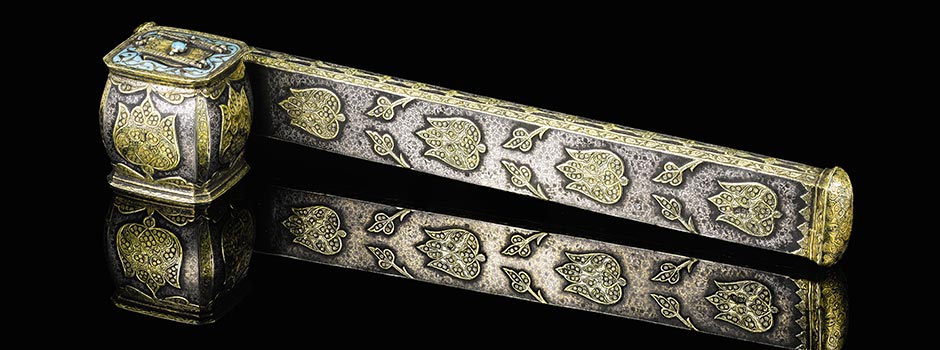
ARTS OF THE ISLAMIC WORLD - LONDON AUCTION ON 9 APRIL 2014 Treasures from Persia, Egypt, Spain and the Ottoman World
Mar 28, 2014 Art Auction

Benedict Carter, Head of Auction Sales, Middle East, commented: “This year’s spring sale offers opulent and luxurious objects befitting the world’s finest collections. The selection of Turkish works are especially notable, led by a rediscovered imperial Ottoman silver-gilt penbox and an astounding group of twenty-seven watercolour portraits of the Ottoman Sultans. Additionally, following the success of our inaugural sale of ‘Art of Imperial India’ last year, we are delighted to once again have sourced for sale a superb array of Indian jewellery, jade and silver. Ranging from an eleventh-century Fatimid chess piece to an eighteenth-century Ottoman metal-thread curtain of the Holy Ka’ba door, the sale reflects the remarkable scope of artistic production and craftsmanship in Islamic culture.â€
_bearing_the_tughra_of_Mehmed_IV_(r.1648-87)_Turkey_.jpg) An imperial Ottoman silver-gilt and nielloed penbox (divit) bearing the tughra of Mehmed IV (r.1648-87), Turkey, second half 17th century / Estimate: £100,000-150,000 / Courtesy of Sotheby's
An imperial Ottoman silver-gilt and nielloed penbox (divit) bearing the tughra of Mehmed IV (r.1648-87), Turkey, second half 17th century / Estimate: £100,000-150,000 / Courtesy of Sotheby's
The sale will be led by a magnificent Qajar royal portrait of Fath ‘Ali Shah, estimated at £1,500,000-2,500,000 (pictured on page one). Fath Ali’ Shah was the pre-eminent Qajar emperor of Persia, and his long reign is characterised as a period of harmony and cultural development. A key patron of the arts, he commissioned a number of life-size portraits, using these images as tools of propaganda, immortalising his rule. Mihr ‘Ali was one of the preferred painters of the Qajar court, famed for the distinctively illustrative quality of his works and his focus on the expression and personality of his subjects.
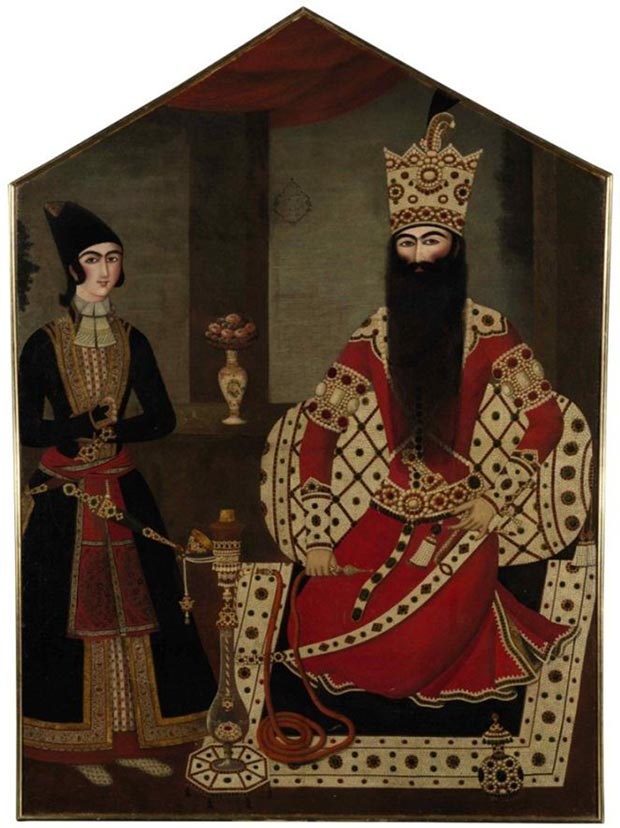 A magnificent Qajar royal portrait of Fath ‘Ali Shah attended by a prince attributed to Mihr ‘Ali, Persia, circa 1820 / Estimate: £1,500,000-2,500,000 / Courtesy of Sotheby's
A magnificent Qajar royal portrait of Fath ‘Ali Shah attended by a prince attributed to Mihr ‘Ali, Persia, circa 1820 / Estimate: £1,500,000-2,500,000 / Courtesy of Sotheby's
Estimated at £80,000-120,000, this chess piece dating from the 11th century presents a rare example of Fatimid rock crystal carving and is an important addition to the known group of rock crystal gaming pieces from this period. This particular piece probably formed part of an important commission for a wealthy patron, given the luxurious material in which it was fashioned.
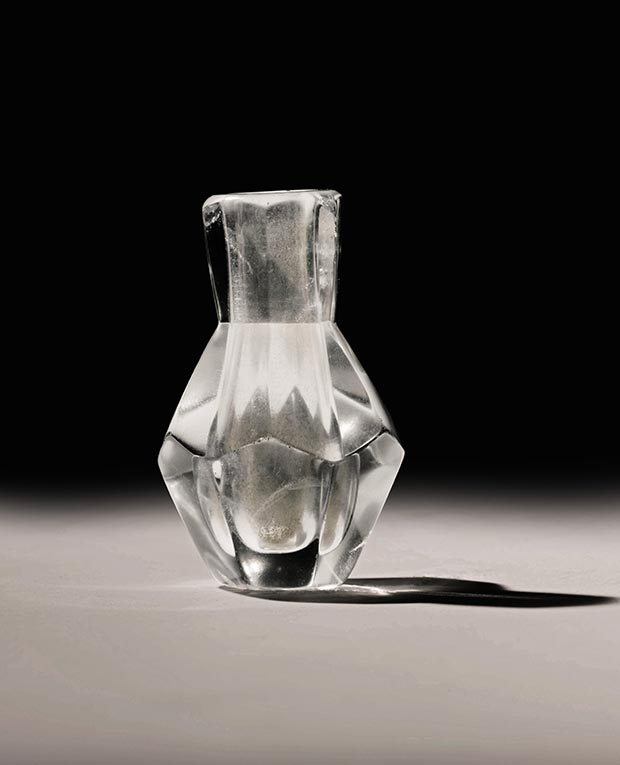 A Fatimid rock crystal Flask, Egypt, 10th-12th century. The body cut as a hexagonal prism with faceted cylindrical neck, 4cm high / Estimate £ 10,000-15,000 / Courtesy of Sotheby's
A Fatimid rock crystal Flask, Egypt, 10th-12th century. The body cut as a hexagonal prism with faceted cylindrical neck, 4cm high / Estimate £ 10,000-15,000 / Courtesy of Sotheby's
Other highlights include a group of Hispano-Moresque pottery dishes from an Italian private collection. The lustre technique was first introduced into Spain by Moorish craftsmen in the twelfth and thirteenth centuries. Characterised by their lively designs and colour combinations, these dishes were highly sought after not only by Spanish patrons but by aristocratic families across Europe. This patronage is reflected in the heraldic emblems that are often found in the centre of the dishes, notably, the heraldic eagle, which often features and of which there are stylistically similar examples in the collections of both the Louvre, Paris, and the Victoria & Albert Museum, London.
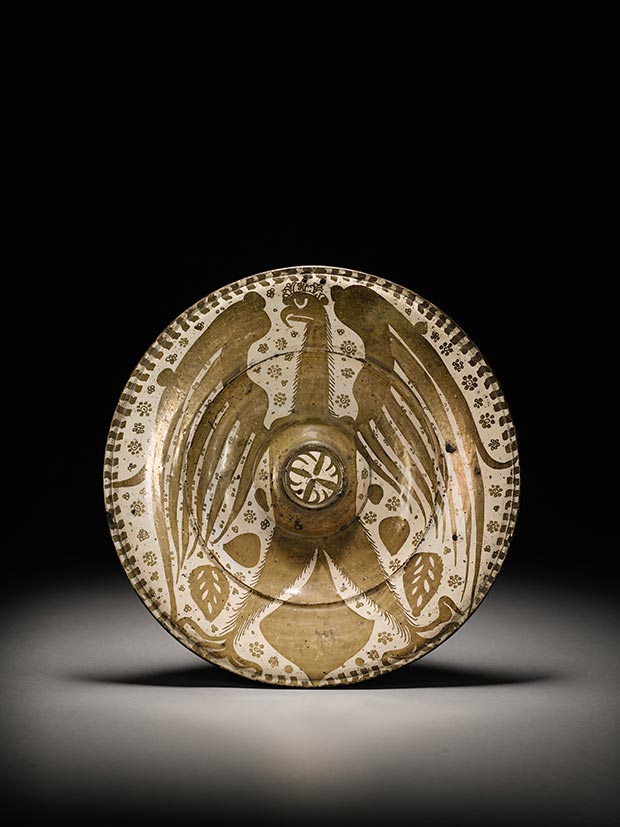 A Hispano-Moresque lustre pottery dish featuring a spread eagle, Valencia, probably Manises, circa 1435-60 Estimate: £50,000-70,000 / Courtesy of Sotheby's
A Hispano-Moresque lustre pottery dish featuring a spread eagle, Valencia, probably Manises, circa 1435-60 Estimate: £50,000-70,000 / Courtesy of Sotheby's
The sale includes a Plan of the Holy Sanctuary in Mecca – this map, dating from the nineteenth century, is a precise scale plan of the Haram al-Sharif, with illustrated details of the Holy Places and other buildings surrounding the mosque. The largest mosque in the world, Al-Masjid Al-Haram in Mecca, surrounds the holiest site in Islam - the Ka’ba which is central to the Hajj.
 A Plan of the Holy Sanctuary in Mecca, signed by Abdulaziz Husni, Arabian Peninsula, Ottoman, dated 1299 AH / 1881 AD, Est: £35,000-45,000 / Courtesy of Sotheby's
A Plan of the Holy Sanctuary in Mecca, signed by Abdulaziz Husni, Arabian Peninsula, Ottoman, dated 1299 AH / 1881 AD, Est: £35,000-45,000 / Courtesy of Sotheby's
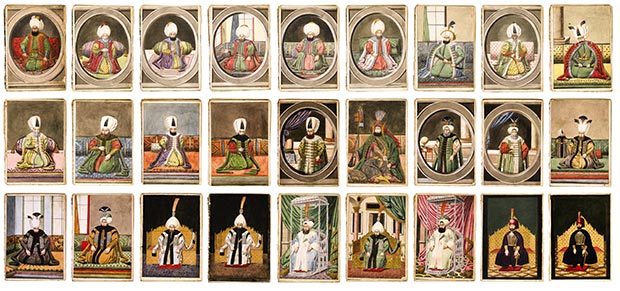 An important collection of twenty-seven watercolour portraits of the Ottoman Sultans, Turkey, mid-19th century / Estimate: £100,000-150,000 / Courtesy of Sotheby's
An important collection of twenty-seven watercolour portraits of the Ottoman Sultans, Turkey, mid-19th century / Estimate: £100,000-150,000 / Courtesy of Sotheby's
Among a number of works in the sale relating to the Ka’ba is an Ottoman metal-thread curtain of the Holy Ka’ba door (est. £80,000-120,000), which is covered in intricate embroidery detailing passages from the Qur’an. Also included in the sale and dating from the seventeenth century, is an Iznik pottery tile depicting the Ka’ba (est. £80,000-120,000). These decorative tiles were often kept in the houses of people who had undertaken the Hajj. Similar tiles can be found in a number of museum collections including the British Museum and Victoria & Albert Museum, London, the Louvre, Paris, and the Metropolitan Museum of Art, New York.
Comments
Add a comment